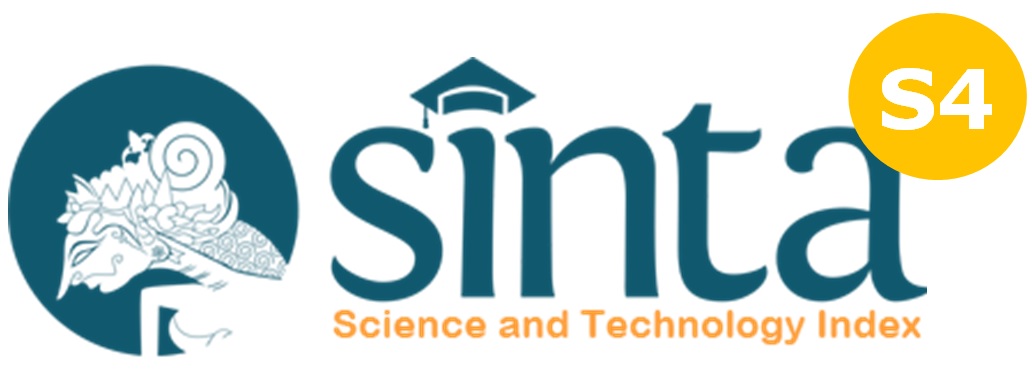AI and Machine Learning untuk Diagnosis dan Intervensi Dini pada Stunting Balita: A Systematic Literature Review
DOI:
https://doi.org/10.23969/infomatek.v27i1.24136Keywords:
stunting, review, machine learning, AI, SLRAbstract
Stunting merupakan masalah kesehatan serius yang berdampak pada pertumbuhan dan perkembangan anak, terutama di negara berpenghasilan rendah dan menengah. Intervensi dini sangat penting untuk mencegah dampak negatifnya, dan teknologi kecerdasan buatan (AI) serta machine learning (ML) menawarkan solusi yang menjanjikan dalam menangani isu ini. Penelitian ini bertujuan untuk mengeksplorasi kemajuan terkini dalam penggunaan AI dan ML untuk diagnosis serta intervensi dini stunting pada anak, sekaligus mengidentifikasi kesenjangan dalam penelitian yang ada. Dengan menerapkan pendekatan Systematic Literature Review (SLR), peneliti mengumpulkan dan menganalisis data dari studi yang diterbitkan antara tahun 2019 hingga 2024. Kriteria inklusi dan eksklusi yang ketat digunakan untuk memastikan hanya penelitian yang relevan dan berkualitas tinggi yang diikutsertakan dalam analisis. Hasil penelitian menunjukkan bahwa algoritma seperti Random Forest dan XGBoost memiliki akurasi tinggi dalam memprediksi stunting. Selain itu, penggunaan Explainable AI (XAI) meningkatkan transparansi dalam pengambilan keputusan untuk intervensi, sehingga memungkinkan pemangku kepentingan memahami faktor-faktor yang memengaruhi stunting. Banyak studi mengindikasikan efektivitas teknik-teknik ini dalam mengidentifikasi faktor risiko stunting. Kesimpulannya, penerapan AI dan ML dalam diagnosis serta intervensi stunting menunjukkan potensi yang signifikan untuk meningkatkan kesehatan anak. Rekomendasi untuk penelitian selanjutnya mencakup pengembangan model yang lebih kompleks dan pengujian algoritma baru, guna memberikan wawasan lebih dalam tentang dinamika stunting dan meningkatkan efektivitas intervensi yang dilakukan.
Downloads
References
Ankalaki, S., Biradar, G., Kumar, K., Geetabai, S., & Bengaluru, T. (2024). Online and Biomedical Engineering. 20(6), 116–138.
Children, U., & New, P. (2023). Machine Learning Algorithms for Predicting Stunting among Under-Five Children in Papua New Guinea.
Chilyabanyama, O. N., Chilengi, R., Simuyandi, M., Chisenga, C. C., Chirwa, M., Hamusonde, K., Saroj, R. K., & Iqbal, N. T. (2022). Performance of Machine Learning Classifiers in Classifying Stunting among Under-Five Children in Zambia.
Dewi, Y. S., Hastuti, S., & Fatekurohman, M. (2024). Analysis of stunting in East Java, Indonesia using random forest and geographically weighted random forest regression. 224, 213–224. https://doi.org/10.28951/bjb.v42i3.679
Di, F., Delmastro, F., & Dolciotti, C. (2023a). Smart Health Explainable AI for malnutrition risk prediction from m-Health and clinical data. Smart Health, 30(May), 100429. https://doi.org/10.1016/j.smhl.2023.100429
Di, F., Delmastro, F., & Dolciotti, C. (2023b). Smart Health Explainable AI for malnutrition risk prediction from m-Health and clinical data. Smart Health, 30(December 2022), 100429. https://doi.org/10.1016/j.smhl.2023.100429
Hermanto, A., Gumelar, A. B., Ongkodjojo, E., Khudrati, W. C., Young, A., Ano Djoka, M. M., Julian, A., Liona Dewi, D. A., & Tahalele, P. L. (2022). Prediction of Nutritional Requirements for Children’s Growth and Adolescents using Machine Learning. 2022 International Seminar on Application for Technology of Information and Communication: Technology 4.0 for Smart Ecosystem: A New Way of Doing Digital Business, ISemantic 2022, 263–267. https://doi.org/10.1109/iSemantic55962.2022.9920443
Hidayat, T., Manongga, D., Nataliani, Y., Wijono, S., Prasetyo, S. Y., Maria, E., Raharja, U., & Sembiring, I. (2024). Performance Prediction Using Cross Validation (GridSearchCV) for Stunting Prevalence. International Conference on Artificial Intelligence and Mechatronics System, AIMS 2024. https://doi.org/10.1109/AIMS61812.2024.10512657
How, M. (2020). Artificial Intelligence-Enabled Predictive Insights for Ameliorating Global Malnutrition : A Human-Centric AI-Thinking Approach. 68–91.
Id, A. A., Richard, S. A., Mohammad, S., Id, F., Id, M. M., Nahar, B., Id, S. Das, Shrestha, B., Koshy, B., Mduma, E., Seidman, J. C., Id, L. E. M., Id, L. E. C., & Id, T. A. (2020). Impact of early-onset persistent stunting on cognitive development at 5 years of age : Results from a multi-country cohort study. 10, 1–16.
Islam, M., Rahman, J., Islam, M., Chandra, D., Ahmed, N. A. M. F., Hussain, S., & Abedin, M. (2022). International Journal of Cognitive Computing in Engineering Application of machine learning based algorithm for prediction of malnutrition among women in Bangladesh. International Journal of Cognitive Computing in Engineering, 3(February 2021), 46–57. https://doi.org/10.1016/j.ijcce.2022.02.002
Issah, I., Appiah, O., Appiahene, P., & Inusah, F. (2023). A systematic review of the literature on machine learning application of determining the attributes influencing academic performance. Decision Analytics Journal, 7(October 2022), 100204. https://doi.org/10.1016/j.dajour.2023.100204
Janawisuta, H., & Gunawan, P. H. (2024). Early Detection of Stunting in Indonesian Toddlers: A Machine Learning Approach. 2024 International Conference on Data Science and Its Applications, ICoDSA 2024, 12–16. https://doi.org/10.1109/ICoDSA62899.2024.10651637
Janssen, S. M. W., Bouzembrak, Y., & Tekinerdogan, B. (2024). Arti fi cial Intelligence in Malnutrition : A Systematic Literature Review. Advances in Nutrition, 15(9), 100264. https://doi.org/10.1016/j.advnut.2024.100264
Khan, G. N., Kureishy, S., Ariff, S., Rizvi, A., Sajid, M., Garzon, C., Khan, A. A., Pee, S. De, Bashir, S., Id, S., & Bhutta, A. (2020). Effect of lipid-based nutrient supplement — Medium quantity on reduction of stunting in children 6-23 months of age in Sindh , Pakistan : A cluster randomized controlled trial. 1–14. https://doi.org/10.1371/journal.pone.0237210
Khansa, G. A. F., & Gunawan, P. H. (2024). Predicting Stunting in Toddlers Using KNN and Naïve Bayes Methods. 2024 International Conference on Data Science and Its Applications, ICoDSA 2024, 17–21. https://doi.org/10.1109/ICoDSA62899.2024.10651676
Kirk, D., Kok, E., Tufano, M., Tekinerdogan, B., Feskens, E. J. M., & Camps, G. (2022). Machine Learning in Nutrition Research. Advances in Nutrition, 13(6), 2573–2589. https://doi.org/https://doi.org/10.1093/advances/nmac103
Komla, E., Id, A., Ofori, H., & Id, D. (2024). Predicting and identifying factors associated with undernutrition among children under five years in Ghana using machine learning algorithms. 1–16. https://doi.org/10.1371/journal.pone.0296625
Maasthi, M. J., Gururaj, H. L., Ravi, V., Basavesha, D., & Almeshari, M. (2023). Decision-making Support System for Predicting and Eliminating Malnutrition and Anemia Abstract : 1–11. https://doi.org/10.2174/0118750362246898230921054021
Marleny, F. D., & Zulfadhilah, M. (2023). Prediction of linear model on stunting prevalence with machine learning approach. 12(1), 483–492. https://doi.org/10.11591/eei.v12i1.4028
Mkungudza, J., Twabi, H. S., & Manda, S. O. M. (2024). Development of a diagnostic predictive model for determining child stunting in Malawi : a comparative analysis of variable selection approaches. BMC Medical Research Methodology, 1–12. https://doi.org/10.1186/s12874-024-02283-6
Munyemana, J., Kabano, I. H., Uzayisenga, B., Cyamweshi, A. R., Ndagijimana, E., & Kubana, E. (2024). The role of national nutrition programs on stunting reduction in Rwanda using machine learning classifiers : a retrospective study. BMC Nutrition, 1–14. https://doi.org/10.1186/s40795-024-00903-4
Ndagijimana, S., Kabano, I. H., Masabo, E., & Ntaganda, J. M. (2023). Prediction of Stunting Among Under-5 Children in Rwanda Using Machine Learning Techniques. 41–49.
Okoli, C. (2015). A Guide to Conducting a Standalone Systematic Literature Review. 37.
Permana, A. A., Raharja, B., & Perdana, A. T. (2023). Artificial Intelligence for Diagnosing Child Stunting : A Systematic Literature Review. 13(6), 605–621. https://doi.org/10.33168/JSMS.2023.0635
Petrauskas, V., Jasinevicius, R., Damuleviciene, G., Liutkevicius, A., Kazanavicius, V., & Bitinaite-paskeviciene, R. (2021). applied sciences Explainable Artificial Intelligence-Based Decision Support System for Assessing the Nutrition-Related Geriatric Syndromes.
Prabiantissa, C. N., Yamani, L. N., Hakimah, M., Puspitasari, I., & Rozi, N. F. (2024). Implementation of Artificial Neural Network (ANN) to Construct Model for Stunting in Toddlers. International Conference on Artificial Intelligence and Mechatronics System, AIMS 2024. https://doi.org/10.1109/AIMS61812.2024.10513149
Qasrawi, R., Sgahir, S., Nemer, M., Halaikah, M., Badrasawi, M., & Amro, M. (2024). Machine Learning Approach for Predicting the Impact of Food Insecurity on Nutrient Consumption and Malnutrition in. 1–16.
Rahutomo, R., & Isnan, M. (2024). Machine Learning Implementations in Childhood Stunting Research : A Systematic Literature Review. 2023 International Conference on Information Management and Technology (ICIMTech), 229–234. https://doi.org/10.1109/ICIMTech59029.2023.10277881
Ranjeeth, S., & Latchoumi, T. P. (2020). Revue d ’ Intelligence Artificielle Predicting Kids Malnutrition Using Multilayer Perceptron with Stochastic Gradient Descent. 34(5), 631–636.
Robinson, J. A., Thi, P., & Dinh, T. (2023). High doses of a national preschool program are associated with the long-term mitigation of adverse outcomes in cognitive development and life satisfaction among children who experience early stunting : a multi-site longitudinal study in Vietnam. December, 1–18. https://doi.org/10.3389/fpubh.2023.1087349
Sc, A. T. M., & Sc, B. A. M. (2020). Machine learning algorithms for predicting malnutrition among under- fi ve children in Bangladesh. 78. https://doi.org/10.1016/j.nut.2020.110861
Sc, K. M., Mohamad, R., & Ph, Y. (2023). A hybrid ensemble approach to accelerate the classi fi cation accuracy for predicting malnutrition among under- fi ve children in sub-Saharan African countries. 108. https://doi.org/10.1016/j.nut.2022.111947
Shi, H., Yang, D., Tang, K., Hu, C., Li, L., & Zhang, L. (2022). Explainable machine learning model for predicting the occurrence of postoperative malnutrition in children with congenital heart disease. Clinical Nutrition, 41(1), 202–210. https://doi.org/10.1016/j.clnu.2021.11.006
Sofian, O., & Karno, U. B. (2020). Analysis of Decision Support System in Determining the Nutritional Status of. 14(1), 9–14.
Using, P., & Learning, M. (2021). education sciences A Systematic Literature Review of Student ’ Performance Prediction Using Machine Learning Techniques.
Usman, M. (2022). Spatial and Machine Learning Approach to Model Childhood Stunting in Pakistan : Role of Socio-Economic and Environmental Factors.
Wahono, R. S. (2015). A Systematic Literature Review of Software Defect Prediction : Research Trends , Datasets , Methods and Frameworks. 1(1).
Wahyuningsih, W., Bukhari, A., Juliaty, A., Erika, K. A., Pamungkas, R. A., Siokal, B., Saharuddin, S., & Amir, S. (2022). Stunting Prevention and Control Program to Reduce the Prevalence of Stunting: Systematic Review Study. Open Access Macedonian Journal of Medical Sciences, 10(F), 190–200. https://doi.org/10.3889/oamjms.2022.8562
Wanti, L. P., Somantri, O., Wachid, N., Prasetya, A., & Puspitasari, L. (2024). Fuzzy expert system design for detecting stunting. 34(1), 556–564. https://doi.org/10.11591/ijeecs.v34.i1.pp556-564
Warijan, W., Indrayana, T., Gunawan, I., Semarang, P. K., Tinggi, S., & Ronggolawe, T. (2023). MACHINE LEARNING MODEL FOR STUNTING. 04(09), 10–23.
Watkins, B., Odallo, L., & Yu, J. (2024). Artificial intelligence for the practical assessment of nutritional status in emergencies. March 2022, 1–12. https://doi.org/10.1111/exsy.13550
Xie, W., Jensen, S. K. G., Wade, M., Kumar, S., Westerlund, A., Kakon, S. H., Haque, R., Petri, W. A., & Nelson, C. A. (2019). Growth faltering is associated with altered brain functional connectivity and cognitive outcomes in urban Bangladeshi children exposed to early adversity. 1–11.
Yanto, M., Hadi, F., & Arlis, S. (2024). Determination of children ’ s nutritional status with machine learning classification analysis approach. 33(1), 303–313. https://doi.org/10.11591/ijeecs.v33.i1.pp303-313
Yehuala, T. Z., Agimas, M. C., Derseh, N. M., Wubante, S. M., Fente, B. M., Yismaw, G. A., & Tesfie, T. K. (2024). Machine learning algorithms to predict healthcare-seeking behaviors of mothers for acute respiratory infections and their determinants among children under five in sub-Saharan Africa. June. https://doi.org/10.3389/fpubh.2024.1362392
Zhang, X., Usman, M., Irshad, R., & Rashid, M. (2024). Investigating Spatial Effects through Machine Learning and Leveraging Explainable AI for Child Malnutrition in Pakistan.







